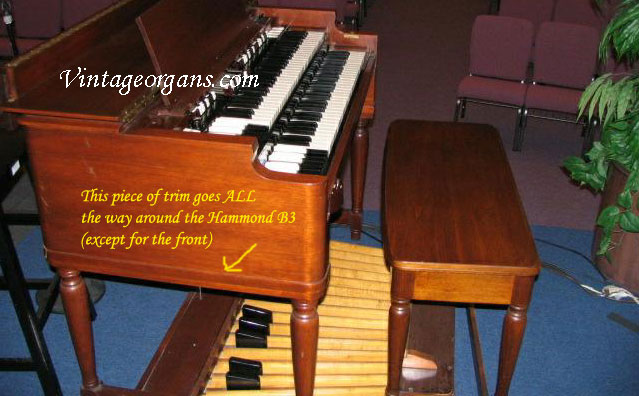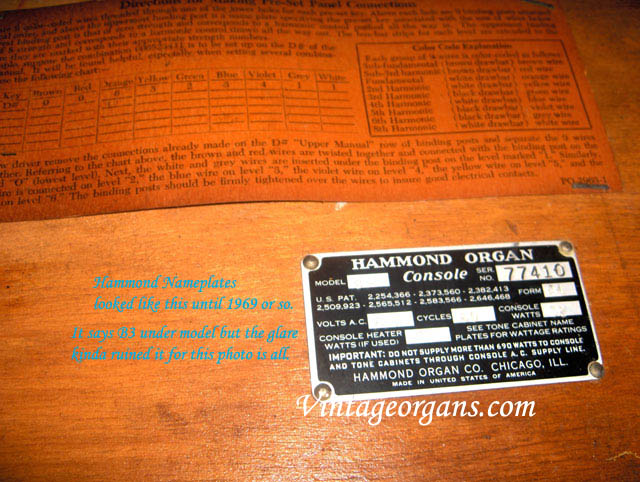

I have measured the TG output levels of a wax capped 1937 BC and the TG notes 1 to 48 were similar to that of the output levels of the same TG notes of the other recapped 1937 BC. There is the measured TG output curve of a recapped 1937 BC but all of the output levels seem a little weaker than all that of all the other TG’s in my TG spreadsheet but apart from the levels of the sine wave ‘’bass all the way down ‘’ TG notes 1 to 12, the rest of the TG notes 13 to 91 have an approximately similar looking output curve shape to that of the 1940’s CV’s and early 1950's B2 and C2 TG's and a 1956 B3 TG. Although each TG has slight differences with individual notes sticking out or being weaker than others, there is a definite similar overall pattern with most of the output curves.

īy looking at the all the measured TG data in the TG spreadsheet l can see a definite trend in the TG output levels. I have the measured TG output levels of over sixty organs in my amassed collection of TG output levels data in my TG data spreadsheet including pre 1964 TG's with wax capacitors, pre 1964 TG's that have been recapped with new capacitors and post 1964 TG's with red mylar capacitors. I do not know how accurately these Alan Young quoted mV levels compared to the actual Hammond factory TG output curve specs used by the Hammond employees who calibrated the TG's, but l have made up a theoretical output curve by drawing a straight upward line starting with 9.05 mVpp for the TG note 36 and then going all the way up to 22.62 mVpp for the TG note 91 and l have printed out these output levels for the TG notes 36 to 91 further down below. For example ,a sine wave at 3.2 mV RMS multiplied by 2.828 equals 9.05 mVpp and a complex waveform bass pedal note at 14.89 mV RMS multiplied by 4.7 equals 69.83 mVppĪccording to most of the measured TG output curves that l have, Alan Young's quoted 9.05 mVpp seems weaker than the more common 10 to 11 mVpp for the TG note 36 and 22.62 mVpp for the TG note 91 seems too strong compared to the more common 15 to 20 mVpp levels of the measured TG’s in my TG spreadsheet. To convert the complex waveform mV RMS level of the bass pedal TG notes 1 to 12 into mVpp, you multiply the mV RMS level by 4.7. To convert sine wave frequencies in mV RMS into mVpp, you multiply the mV RMS level by 2.828 to get the mVpp level. This contour has been modified only once, in 1956, for the convenience of our test equipment procedure."Ģ50 Hz is between the TG notes 36 and 37.ģ.2 mV RMS is 9.05 millivolts peak to peak ( mVpp ) and 8 mV RMS is 22.62 mVpp. The upper portion and lower portion rise at about 2 db per octave from the mean low level at aboutĢ50 Hz. The output voltage of each tone source (tone wheel coils) follows a prescribed "pre-emphasis" schedule varying from 3.2 to 8 mV. Report by Alan C Young, Senior Product Analysis Engineer: Mike Fulk posted this to Hamtech in 1998 and it says the following: However there is an Alan Young factory report from 1969 which has some information. I have never seen any Hammond factory chart that shows the official correct factory TG output levels measured directly from the TG terminal strip in millivolts Peak to Peak ( mVpp ) or in millivolts RMS ( mV RMS ).

Hammond organ serial numbers generator#
THEORETICALLY POSSIBLE HAMMOND FACTORY TONEWHEEL GENERATOR OUTPUT LEVELS FOR THE HAMMOND ORGANS OF THE VARIOUS ERAS OF PRODUCTION.


 0 kommentar(er)
0 kommentar(er)
